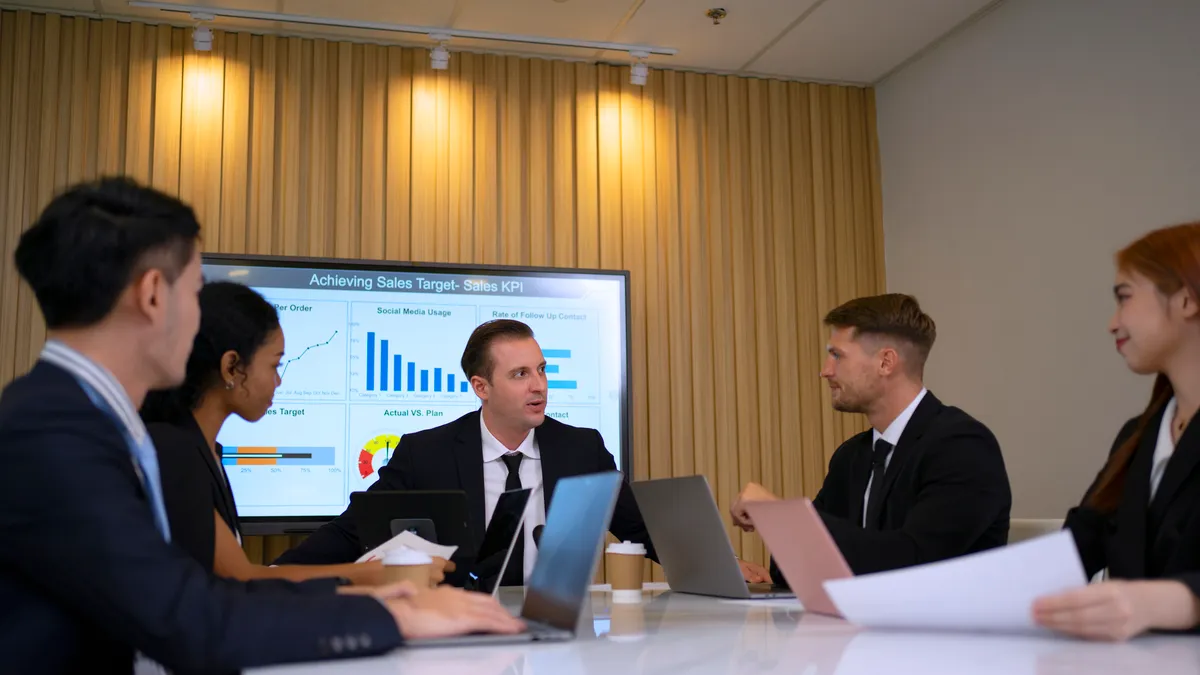Change-resistant attorneys might need a lot of convincing before they accept a new process or tool, but the time and energy you spend with them is worth it, a legal ops professional says.
“If you can win over these people, my gosh, your life is easier,” says Lauren Ruitberg, the operations manager for Pepperdine University’s general counsel office.
Ruitberg evolved into the role of legal ops manager after joining the university to help bring efficiencies to the in-house team as the general counsel’s executive assistant.
“I never even heard of legal ops,” Ruitberg said in an Inside Voices podcast. “I just tried to improve things where I could without realizing what I was doing necessarily. I’d see something that was done in a very analog, manual fashion, and thought that there’s a better way to do this. It’s like a light bulb clicked on. Legal ops was what I was doing. That’s when my role officially transitioned over.”
Creating in-house efficiencies was a natural evolution of the skills she had honed as a law-firm litigation paralegal. “It’s a very project-management oriented kind of work,” she said. “I just had that mindset.”
Top-down approach
Every project she undertakes starts with a go-ahead from the general counsel, whose support is critical for getting the resources and buy-in from the team.
“I don’t think I’ve ever rolled out an initiative from the bottom up,” she said.
If she gets a sense there’s a better way to do something, she’ll check her intuition against how the attorneys see it, and if there’s a consensus, she’ll bring the idea to the general counsel.
“I’ll say, ‘Hey, I have this idea and it turns out four out of five people on the team also feel like this is a real struggle and they can save x amount of time if they had a different option,’” she said. “So, at that point, I’ll get his blessing or not.”
Most attorneys fall somewhere in the middle when it comes to accepting a new process or tool, so she tries to get a firm understanding of how the most resistant and the most forward-looking team member sees the idea.
“I try to anticipate as much as I can,” she said. “I think, what can they possibly find wrong with it?”
Once she gets buy-in to adopt a new tool, she’ll make sure the most resistant team member gets what’s needed to make the transition a success.
“I usually approach them before I roll out the change and give them a head’s up, because the more advanced notice they have, typically the better they can roll with it,” she said.
Once the process or tool is in place, she creates a one-page cheat sheet that walks the attorneys through what they need to know, and if she needs to, she’ll do it a second time if someone finds the change frustrating.
“You have the inevitable bump in the road,” she said. “Staying positive helps the general mood but it also communicates something to that person who’s having trouble. It communicates that we got this, you’re not alone and we’re going to fix it.”
Quantifying change
Collecting data once a change is in place helps her make the case for staying the course.
“I’m trying to sell the function,” she said. “I tell them on a regular basis how much better things are, sometimes jokingly, sometimes not.”
Because the team only started automating when she came on board, about five years ago, she has limited data she can pull from to make her case, but what data she has she uses.
“We don’t have a lot of historical data on how quickly it used to take us to pay an invoice,” she said. “I can tell you the last couple of years but I couldn’t tell you that from five years ago.”
But even limited data is valuable.
“That’s something the GC can email to the CFO or the president,” she said. “Even if they don’t ask for it, I’ll run a report: this is last year’s spend. This is how much we spend on legal expenses vs. when we have a new billing system that automatically enforces billing guidelines. I know it’s going to have a positive impact, and that’s going to benefit the function.”
As more data is compiled, it’ll become easier to quantify the impact new processes and tools are having, and that will be a big measure of success for her efforts, she said. But she also believes the efficiencies she’s putting in place can be valuable beyond the legal function to the extent that what she learns can be of use to the university more broadly.
“I keep my ear to the ground on what's going on around me,” she said, “not because I’m trying to change what someone else is doing necessarily. I just want to help. I’m a believer that the more information you have, the better. You’re going to make a big decision, so if we can bring that extra piece to the table, how much healthier is that conversation?”



















